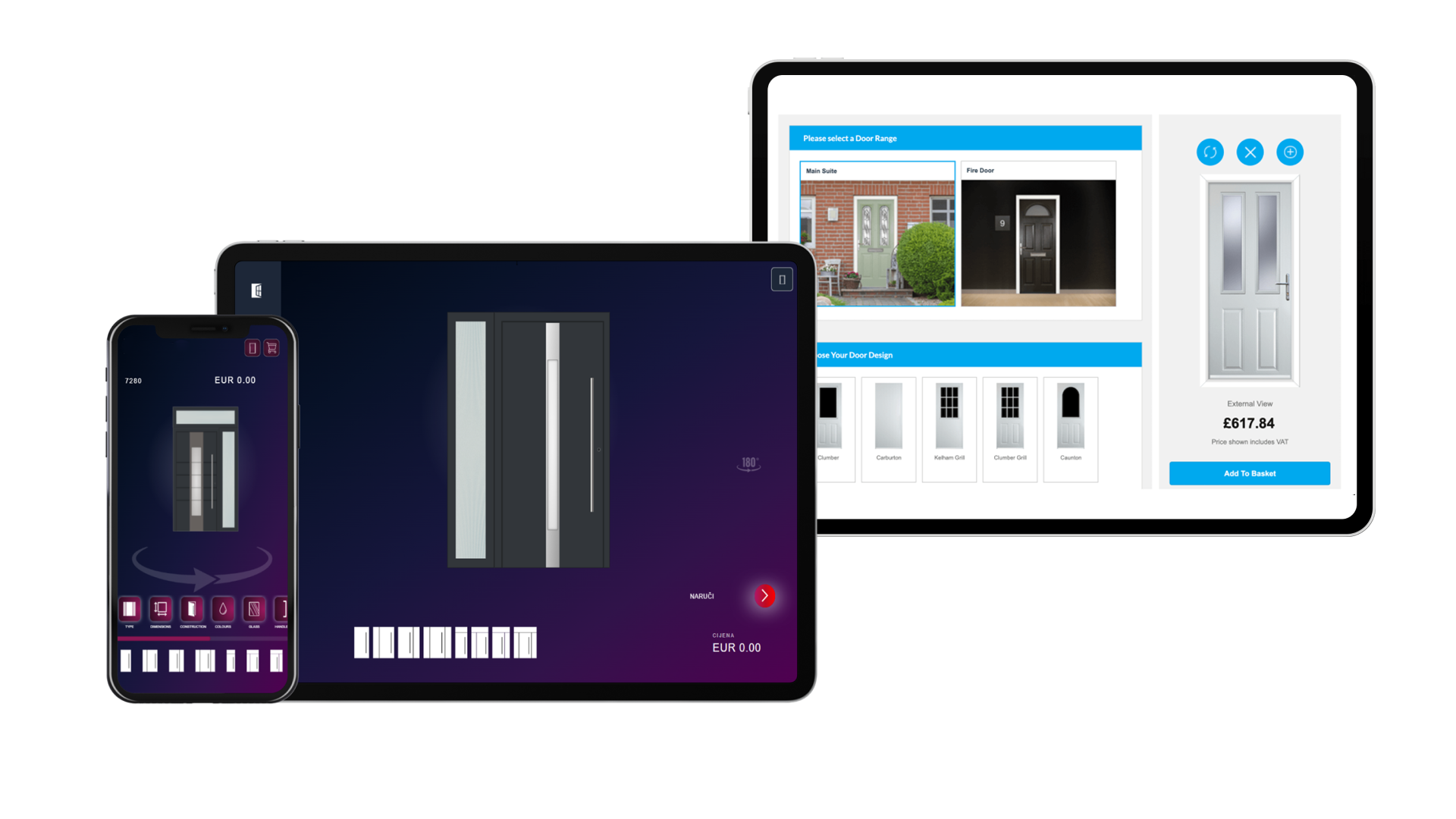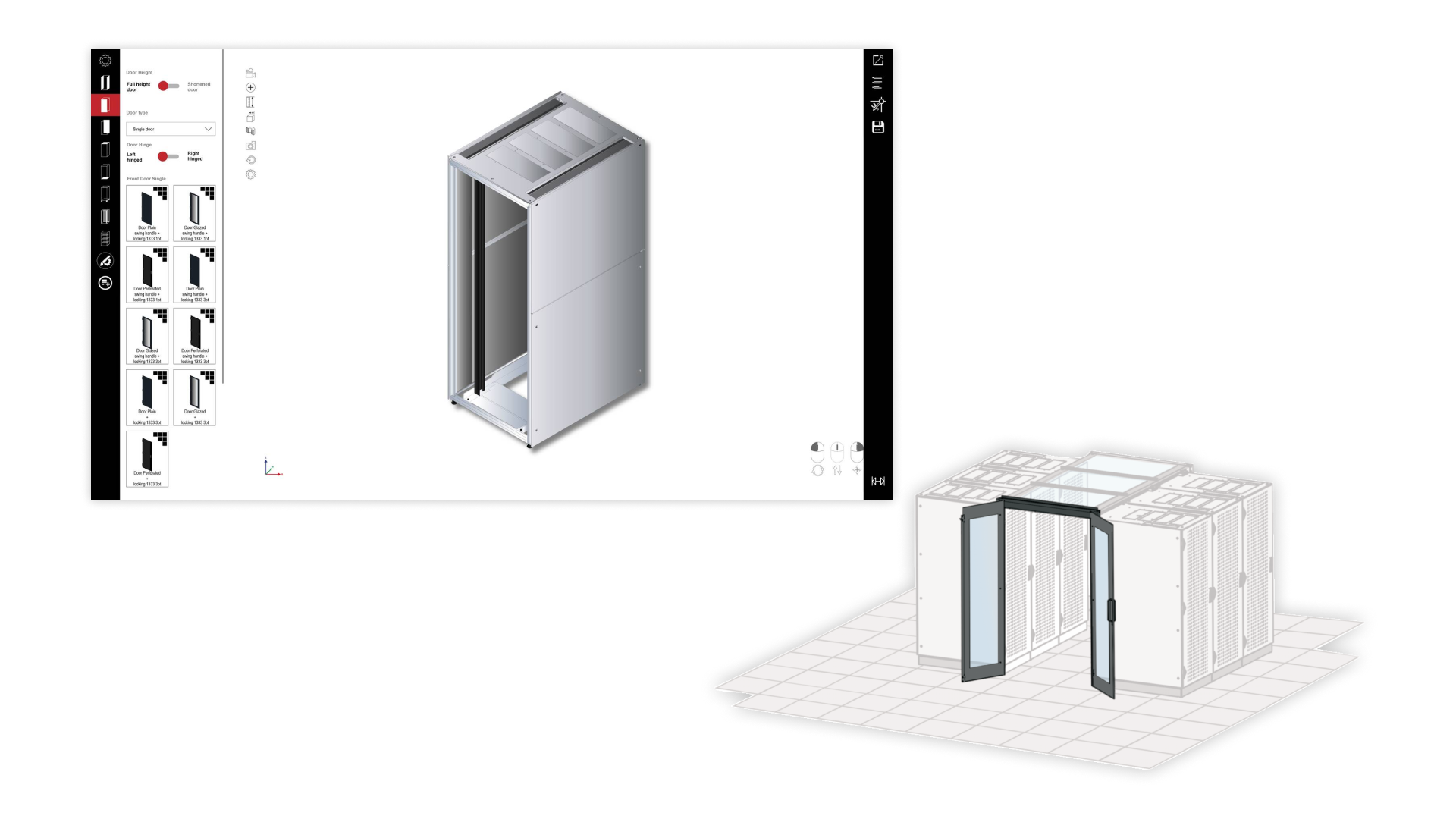Selling doors for a home or office is a complex business, because it is quite difficult for a client to explain exactly how his product will look after installation. As a result, misunderstandings may arise between the seller and the buyer, which results in negative reviews and even loss of reputation. The solution to this problem is 2D configurators.
They make it possible to personalize the product in a convenient web interface, and instantly visualize the changes made. As a result, the buyer immediately sees exactly how his door will look after installation. In this article, we propose to talk about exactly how 2D configurators work, what technologies are used to develop them, and how the production process is built.

A 2D configurator can be compared to an online constructor. It contains ready-made modifications – color, size, material, design style, number of glasses and other important parameters, from which the user can independently “assemble” the door in accordance with his personal preferences. At the same time, changes are instantly displayed on a two-dimensional model of the door, and the cost of the product is automatically recalculated depending on the selected components.
As a result, the client receives his “ideal door”, sees its estimated cost and can immediately proceed to placing an order. In practice, 2D configurators provide businesses with a number of important advantages:
The 2D configurator can contain a large number of customizable features. Consider the main parameters that should be added to it:
Construction type
Opening: hinged doors, sliding doors.
Finishing material
The configurator works on the client side, so if you plan to integrate it into your website or CRM system, then developing the frontend part will be enough. For this, static HTML / CSS / JavaScript technologies or reactive frameworks Vue.js, React.js can be used.
If the 2D configurator will work as an independent web application, you will also have to develop its server part. The backend can be written in Python, Java, PHP or using Django/Flask/Yii2/Laravel frameworks.

The development of 2D configurators is carried out according to the iterative Scrum methodology and consists of several stages. We propose to consider them in more detail.
Stage 1. Gathering information
The first step is always to discuss the project and study the client’s requirements. Developers need to understand exactly what tasks the configurator should perform, what custom options should be added to it, whether models and textures are available, or whether they will need to be created separately.
Stage 2. Design
At this stage, a prototype of the configurator is created, which includes a description of the functionality, different options for GUI concepts, and interface warframes. In addition, developers create technical documentation for the project and record demo videos for the client, which already at this step help him understand how the finished product will work and look like.
Stage 3. Design development
The next step is to develop the user interface of the configurator. It includes:
In fact, at this stage, all the graphical components that users will interact with are created.
Stage 4. Technical development
When design mockups, models and textures are ready, frontend developers join the project and create the client side of the 2D configurator. Their tasks include layout, development of animations, event handlers and other components that will make working with the product as comfortable as possible. After that, backend developers create functionality, API and connect the frontend with the server.
Stage 5. Testing
Before being released to release, the project is thoroughly tested by QA engineers. This allows you to eliminate all possible bugs in a timely manner – even before real users start using the 2D configurator.
Stage 6. Support and development
When the configurator is released, the last task remains – to ensure its qualified technical support and development. So it will always remain in demand in the market and will be able to fully satisfy the needs of users.
Using the 2D Door Configurator will help your company significantly improve the quality of product presentation and increase customer satisfaction. Ultimately, this will naturally lead to increased sales and a positive impact on the profitability of the entire business. With all the advantages of the configurator, it should be noted that it is extremely sensitive to details. Therefore, the quality of technical execution plays a very important role here. To implement such projects, AVADA MEDIA has already formed teams of experienced developers. They will help you design and implement a reliable product, as well as provide qualified technical support.
Our works
Contact the experts Have a question?
Developed by AVADA-MEDIA™
The user, filling out an application on the website https://avada-media.ua/ (hereinafter referred to as the Site), agrees to the terms of this Consent for the processing of personal data (hereinafter referred to as the Consent) in accordance with the Law of Ukraine “On the collection of personal data”. Acceptance of the offer of the Consent is the sending of an application from the Site or an order from the Operator by telephone of the Site.
The user gives his consent to the processing of his personal data with the following conditions:
1. This Consent is given to the processing of personal data both without and using automation tools.
2. Consent applies to the following information: name, phone, email.
3. Consent to the processing of personal data is given in order to provide the User with an answer to the application, further conclude and fulfill obligations under the contracts, provide customer support, inform about services that, in the opinion of the Operator, may be of interest to the User, conduct surveys and market research.
4. The User grants the Operator the right to carry out the following actions (operations) with personal data: collection, recording, systematization, accumulation, storage, clarification (updating, changing), use, depersonalization, blocking, deletion and destruction, transfer to third parties, with the consent of the subject of personal data and compliance with measures to protect personal data from unauthorized access.
5. Personal data is processed by the Operator until all necessary procedures are completed. Also, processing can be stopped at the request of the User by e-mail: info@avada-media.com.ua
6. The User confirms that by giving Consent, he acts freely, by his will and in his interest.
7. This Consent is valid indefinitely until the termination of the processing of personal data for the reasons specified in clause 5 of this document.
Send CV
Contact us in any convenient way for you:
+ 38 (097) 036 29 32